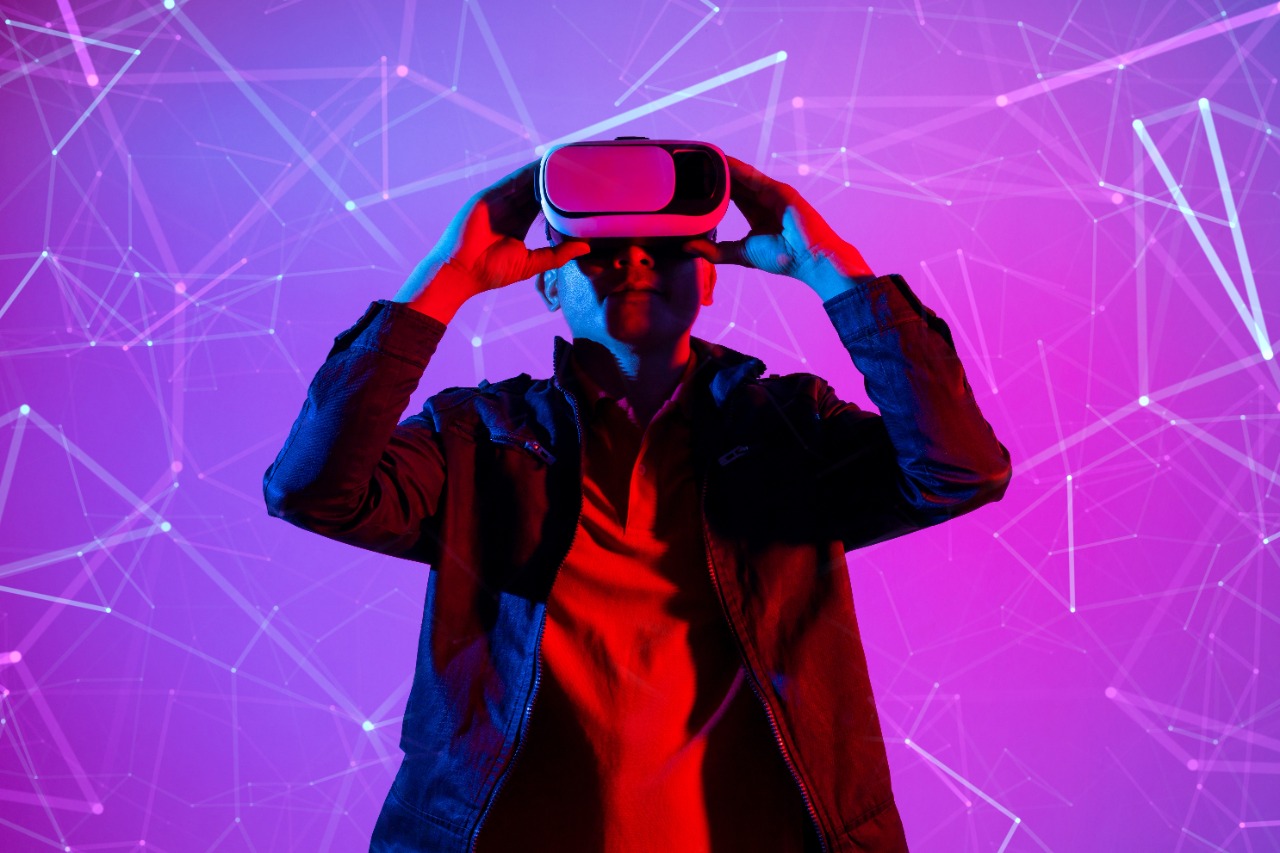South Korea is an especially interesting case as they’re aiming to build a virtual counterpart of the country’s ecosystem.
Let us discuss the role of NFTs in the nascent metaverse, and explore a few different versions of the metaverse with a focus on Indian innovation in the field. We’ll discuss a few fun examples of the way the metaverse is being used right now, from unique “foodverses” to the rise of e-sports in the XR world.
So, you may have been bombarded with a certain acronym in the past few months—NFTs, or Non-Fungible Tokens. Let’s break them down. First, each NFT has its own unique identity, and second, this identity is verified by a decentralised ledger maintained via blockchain. We know, it sounds like gibberish. But a blockchain is simply a way to store information in sequential form, in several places at once, so that it becomes nearly impossible to falsify or counterfeit. Like a collectible; any serious collector will be able to quickly tell you all the stats related to their prized collectible items: who owned it before, how many other similar items exist in the world, etc.
In the metaverse, NFTs provide a way for items to have a digital provenance, where you can track the ownership and pedigree of an item via a simple click. And this extends to images, videos, text, artwork, digital wearables – and virtual land. Metaverse spaces such as Decentraland and SandBox have parcels of land in the form of Land NFTs which you can buy and build on.
In India, SuperWorld is a company exclusively dealing in virtual real-estate. They have built a virtual map of the world, divided into 64 billion packets of land which people can buy as NFTs using cryptocurrencies. You can put hotspots and markers in a spot in the real-world which can be seen in the virtual world, and gain a percentage of revenue from any commercial activity going on in your patch of land – virtual advertising, data analytics, gameplay, etc. The potential of NFTs is limited in India right now, chiefly due to the government’s reluctance to classify it as currency, which makes it a bit more speculative and experimental as an investment. But even so, curious investors and risk-takers are flocking to it in their droves. For instance, in only two months, from April 2021 to June 2021, NFTs being traded in global marketplaces jumped 43% in volume. Binance-owned WazirX is leading the pack as India’s first NFT marketplace, where users can discover NFTs and trade cryptocurrencies.
We’re also seeing different spins on the concept of the metaverse, such as country-themed metaverses, as we’ve seen recently in China and South Korea. South Korea is an especially interesting case as they’re aiming to build an ambitious virtual counterpart of the country’s ecosystem, with even a pilot programme in the works to provide a fully-virtual communications system for the country’s capital city, Seoul. The interest these highly ambitious and forward looking countries are showing in the potential of the metaverse shouldn’t be dismissed, and we, in turn, should start looking at ways in which we can jump ahead and bolster the Indian public and private sector’s metaverse capabilities.
On a lighter note, there is even a metaverse devoted only to food. Delhi-based OneRare has put a unique spin on the concept of the metaverse, they are creating NFTs in the form of food ingredients which users can grow, sell, exchange, and use to make food (using NFT recipes, of course). Consequently, OneRare’s Foodverse will have farms where users can cultivate food, a kitchen for them to cook in-game food, a farmer’s market for trade, and lastly a playground for gamified social interactions. This will provide a framework for a gaming experience harking back to the popularity of food-based games such as Diner Dash, Fruit Ninja, and Candy Crush.
There’s also the recently announced ‘Hefty metaverse’, the product of powerhouse entertainment entities T-Series and Hungama. With a joint library of millions of songs, thousands of videos, and 150 films, the Hefty metaverse may come to have a near-monopoly on Bollywood themed NFT trade and generation.
And finally, because nothing in India is complete without mention of cricket, we have our first instance of an Indian Premier league team entering the metaverse, as the Gujarat Titans launched a virtual space on Spatial.io and unveiled their new logo at a virtual event. There is a huge potential for e-sports in the metaverse, seeing that most avid e-sport fans are exploratory and digitally savvy, with a willingness to spend money on virtual goods. Tapping into that market would be a savvy move for legacy sports organisations. At MetaQube, we’re in fact building a use case only for the e-sports metaverse by utilizing our powerful metaverse creating platform.

